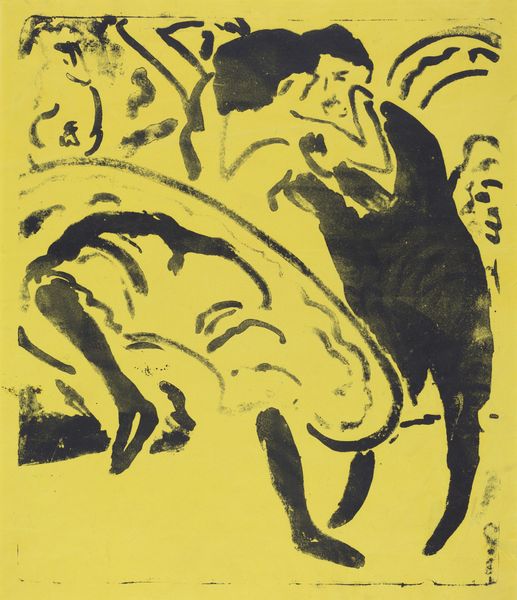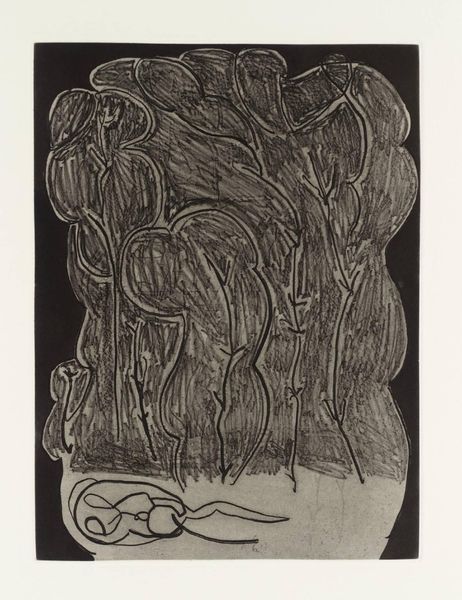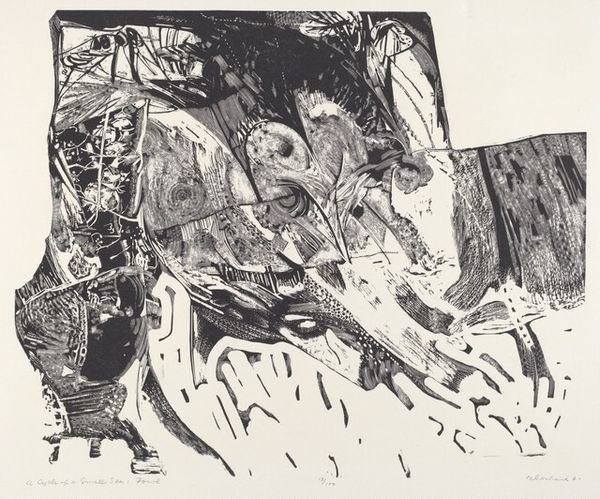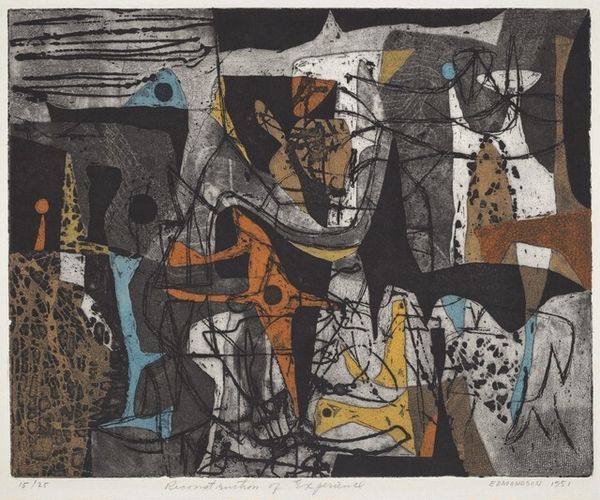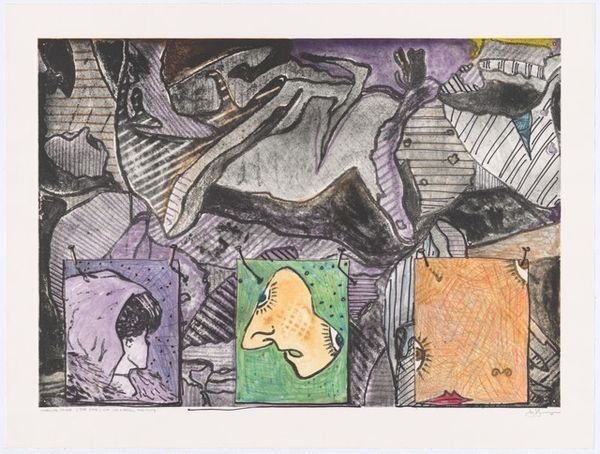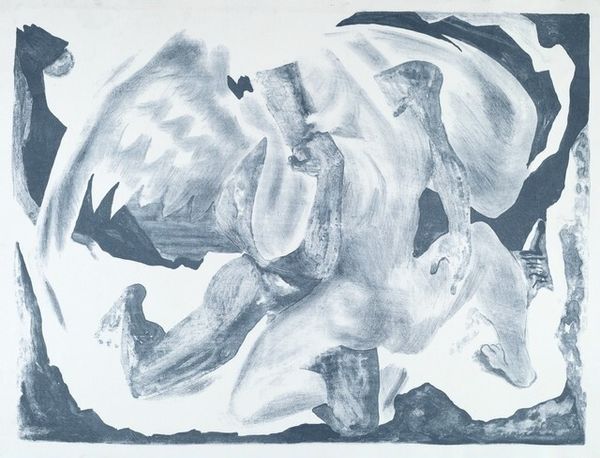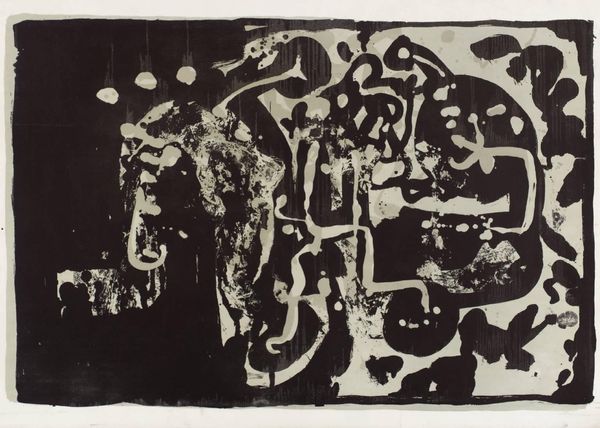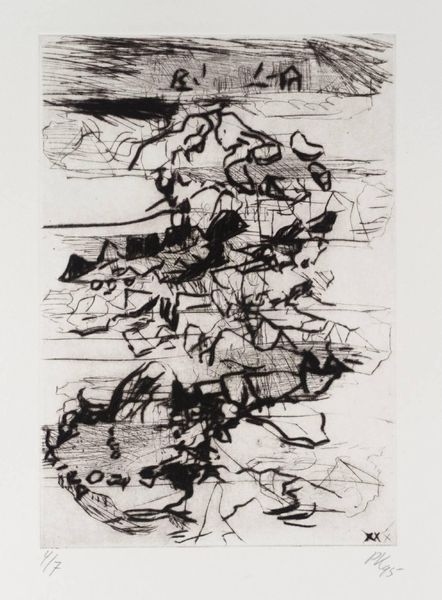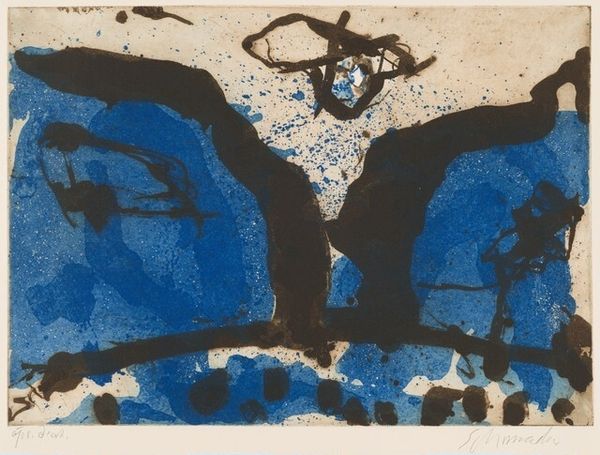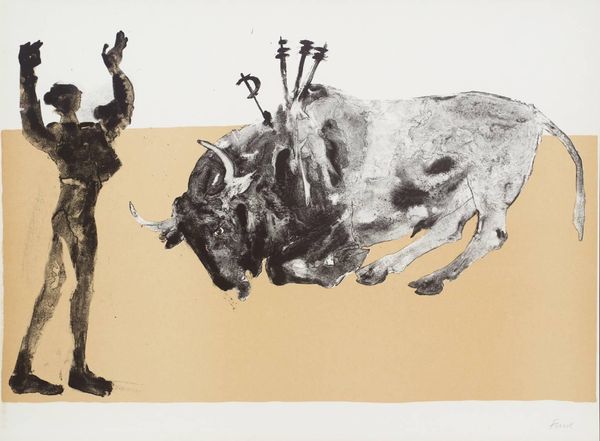
mixed-media, collage
#
mixed-media
#
collage
#
figuration
#
modernism
Copyright: Helen Dahm,Fair Use
Curator: This intriguing artwork, created using mixed media and collage techniques, is entitled "Ausritt" by Helen Dahm. The bold contrasts and simplified forms immediately give me a sense of stark beauty, almost like a woodblock print. What is your impression? Editor: My initial feeling is one of constraint and tension. The sharp edges, the limited color palette, the fractured forms of the horses… it speaks to a societal struggle, maybe even an internal psychological battle visualized through the motif of equestrian pursuit. Curator: That's an interesting take. We have so little context from the date, we can only infer the historic moment through the artist's visual language. I think Helen Dahm's stylistic choices – her exploration of modernism, especially given the figures – push me to think about broader societal shifts and challenges to the established order she would have witnessed. Editor: Right, these choices signify deliberate artistic decisions embedded within the context of early twentieth century social upheaval. The horse and rider motif – traditionally linked with power, aristocracy, and domination – appears deconstructed, questioned even. Who are these riders? What are they pursuing? And at what cost? I also find the near absence of color interesting. We only have two splashes of it! Curator: A fascinating observation. I suppose we must interpret this choice as intentional, the spots of blue and yellow in one of the horses perhaps providing the sole point of optimism or resistance amidst the monochrome environment? It might serve to highlight that even amid struggle, individual expression and perhaps liberation remain possible. What kind of social structures might this scene of 'riding out' reference in its departure from classical representation? Editor: Perhaps we could read these partially erased, abstracted horse-rider figures, set against a predominantly somber backdrop, as signifiers for repressed voices fighting to assert their presence in an authoritarian or oppressive society. Their struggle echoes broader contemporary narratives of marginalized identities reclaiming agency. The question it poses is how these power structures define our lives today. Curator: Food for thought indeed, particularly when we view artwork like “Ausritt”. It serves as an important reminder about art’s capacity to address socio-political issues while allowing multiple layers of nuanced interpretation. Editor: Absolutely, a reminder of how art serves as a vital platform for the critical exploration of ourselves.
Comments
No comments
Be the first to comment and join the conversation on the ultimate creative platform.



